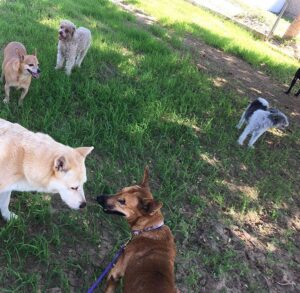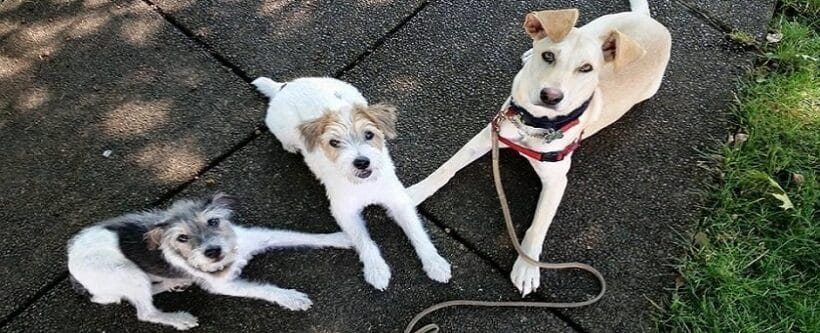Is Your Dog Social?
“Socialization”, what does it mean when it comes to dogs. Most of us know how to socialize with humans, but we may have seen people who are socially awkward in certain situations.
With canines, it is similar, dogs will be socially awkward in situations that they are not accustomed to. Their reactions might even be like people, shy people will hang back and not engage with others, some people get in others’ space or talk too loudly to overcome their shyness.
The ideal time to socialize puppies is when they are 4 weeks to 4 months old. This is when you want to expose them to all kinds of stimuli. Loud noises, traffic, lakes or beaches, many different people and animals should be on your list of environments to expose your little ones.

Dogs are rescued from many different circumstances. Often when you adopt a rescue you don’t know their background and what they have or have not been exposed to. Dogs who live in rural areas that suddenly find themselves in an urban city environment will react to the new smells, noises, and even climate changes that are unfamiliar.
Socialization doesn’t mean only introducing your dog to other dogs and people. It is introducing and having your dog be comfortable in new environments and circumstances.
To do that, you need to expose them to all kinds of things that they may not have experienced before. Depending on the dog, you will want to take this slowly and watch their body language to tell you what is fearful and what they are used to.

Timid or fearful dogs can learn to trust and overcome their fear.
However, you must go at their pace. Too much too soon may worsen their reaction. The objective is to create a fun positive experience for the dog. Lots of praise when they take that first step towards the behavior you want. Treats when they do what is expected of them.
Dogs that are hesitant or fearful are likely those who have just never experienced this situation in the past and are unfamiliar with the new environment. Some examples of body language would be a tucked tail, flat ears, licking their lips, yawning, shaking, whining, or crouched body. @photo courtesy of ASPCA
The thing to remember is that not all dogs will be social all the time.
This graphic is a perfect example that in the world of dogs, just like people, some are very social, most are tolerant, and many are aggressive or not very nice. There is also a sliding scale where the dogs will change their sociability as they mature and age.
Tips on how to socialize your dog
- Create positive experiences – reward the dog either with praise or treats when they move towards that scary thing
- Brief encounters are best – on-leash introductions to other dogs are best kept brief then reward good behavior after the other dogs move on.
- Start with an easy environment first – don’t try to exceed your dog’s stress threshold too soon, baby steps, and watch their confidence grow
- Remove your dog from a high-stress situation quickly – expect the unexpected. If something stressful comes up, get your dog out and relax them with physical affection or play/food rewards.


